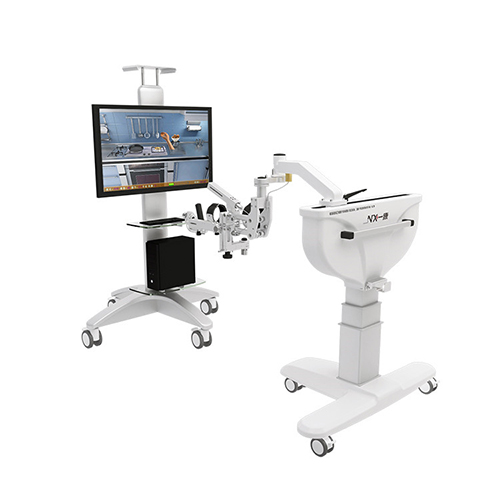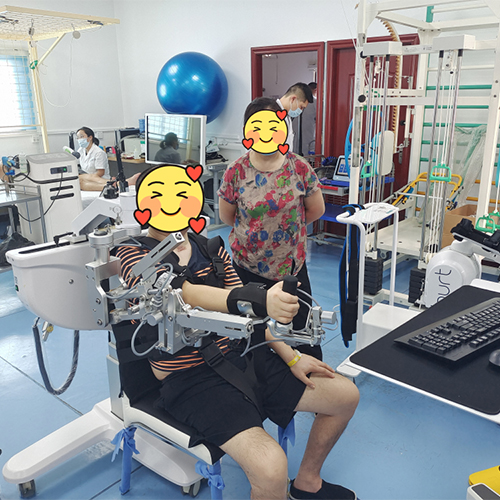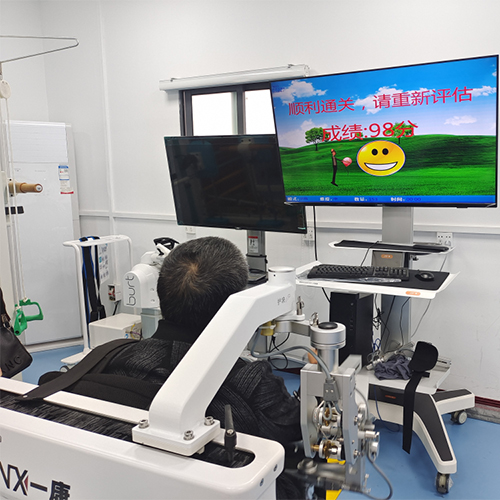What is the upper limb rehabilitation robot?
The upper limb rehabilitation robot, also known as The Upper Limb Intelligent Feedback Training System, utilizes computer virtual technology and combines principles of rehabilitation medicine to simulate real-time movement patterns of the human upper limb. Patients can complete multi-joint or single-joint rehabilitation training in a computer virtual environment.
Extensive research has shown that stroke, severe brain injury, or other neurological disorders can easily lead to upper limb dysfunction or impairment. Defining treatment goals and providing targeted training can effectively improve patients’ upper limb function.
What indications is the upper limb rehabilitation robot?
The upper limb rehabilitation robot is mainly suitable for conditions such as stroke (including acute phase, hemiplegic phase, and sequelae phase), brain injury, spinal cord injury, peripheral nerve injury, musculoskeletal disorders, pediatric cerebral palsy rehabilitation, spasticity, disuse atrophy, restricted joint movement, sensory dysfunction, neuroregulation, neurofunctional disorders, and other neurological disorders that cause upper limb dysfunction or require postoperative upper limb function recovery.
What are the features of the upper limb rehabilitation robot?
1. Functional assessment: It evaluates the range of motion of the shoulder, elbow, and wrist joints and saves the data in the patient’s personal database. It also assesses upper limb muscle strength and grip strength, which helps therapists analyze treatment progress and make timely adjustments to the treatment plan.
2. Intelligent feedback training: It provides real-time and intuitive feedback information and accurately assesses the patient’s rehabilitation progress. It also enhances the patient’s training enjoyment, attention, and initiative.
3. Information storage and retrieval: It individually stores patient information for convenient development of training plans and retrieval of patient data by therapists.
4. Arm weight-bearing or unloading training: For patients with early paralysis and weak limb strength, the robot can reduce the weight-bearing on the limb during training, making it easier for patients to move and improve their residual neuromuscular control. After functional recovery, patients can gradually increase their weight-bearing to promote further rehabilitation.
5. Visual and auditory feedback: By simulating routine activities in daily life, the robot provides various motivating exercises and games, encouraging patients to engage in longer and more effective training sessions, thereby enhancing their neuroplasticity and motor relearning ability.
6. Targeted training: It allows for individual joint-specific training or combined training of multiple joints.
7. Printing function: The system generates assessment reports based on evaluation data, and each item in the report can be displayed in line graphs, bar charts, or area charts, and can be printed.
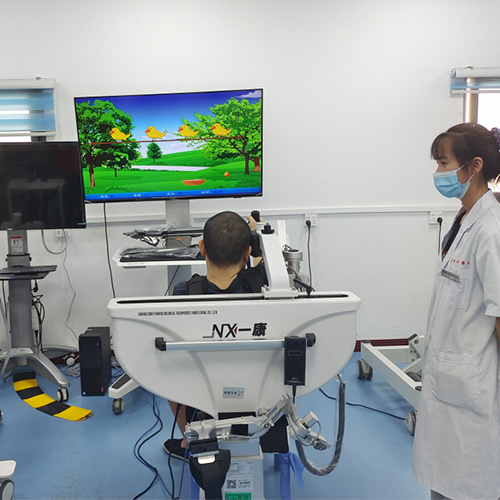
What is the therapeutic effect of the upper limb rehabilitation robot?
1. Promoting the formation of isolated movements and establishing normal movement patterns and neural transmission pathways, stimulating neural system reconstruction.
2. Combining spontaneous electromyographic signals with external neuromuscular electrical stimulation signals.
3. Integrating electrical stimulation into active movement, forming an active closed-loop feedback stimulation pathway.
4. Helping patients relearn correct and effective movement patterns, strengthening or establishing voluntary control of paralyzed limbs.
5. stimulating residual muscle strength, exercising upper limb muscle strength, relieving muscle tension, reducing muscle spasms, and enhancing muscle endurance.
6. Restoring joint coordination, improving upper limb movement control, promoting the recovery of neural pathways, and alleviating joint contractures.
What are the advantages of the upper limb rehabilitation robot?
1. Real-time monitoring and recording of treatment parameters and changes in the patient’s physiological signals, enabling objective and reliable monitoring of the patient’s functional improvement.
2. The upper limb rehabilitation robot is more suitable for precise rehabilitation training. It can adjust the applied motion parameters on the patient in real-time and with accuracy, allowing for more flexible and accurate treatment.
3. Through multimedia technologies such as virtual reality, the upper limb rehabilitation robot can provide additional therapeutic effects beyond the therapist’s treatment. It is enjoyable and encourages active participation, particularly for patients with impairments in perception and attention.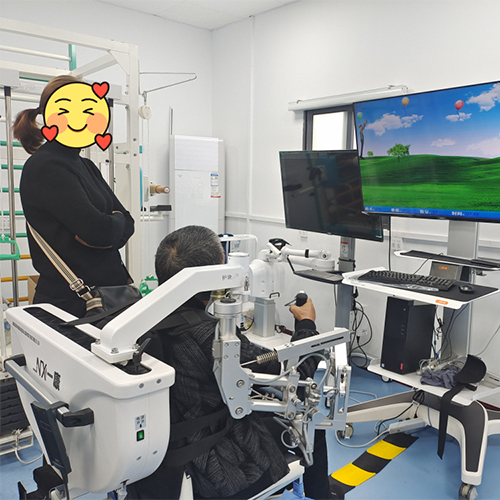
More Exciting Content How to improve hemiplegic gait?
About The Upper Limb Rehab Robot: https://www.yikangmedical.com/arm-rehabilitation-robotics-a2.html
Post time: Mar-08-2024







